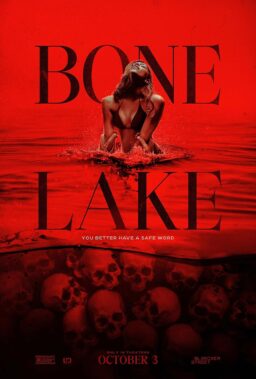Literary critics can quote from the works they’re discussing, but movie critics have got to describe. This can become awfully frustrating; you can quote a paragraph of Henry James, but how are you going to describe Elizabeth Taylor!
I imagine that a lot of movie critics have wished, from time to time, that they could insert film clips between their paragraphs – so readers could see the scenes they were discussing. Now a critic has got his chance.
Peter Bogdanovich, whose “The Last Picture Show” was the hit of this year’s New York Film Festival, was also represented in the festival by a critical documentary on John Ford.
The film, “Directed by John Ford,” contains scenes from some two dozen of Ford’s 150-odd movies. It has interviews with Ford’s three favorite actors: John Wayne, James Stewart and Henry Fonda. And, in a marvelous interview conducted at Ford’s favorite location, Monument Valley, Arizona, there is even a conversation with the crusty old master himself. (“Take one,” an offscreen voice says, and then the clapboard moves to reveal Ford saying, “Take one? Hell, there’s only gonna BE one take.”)
The Bogdanovich documentary is most effective when it is showing us footage from Ford; it acts as a highly selective anthology, reminding us of the richness of this great director’s lifework. We see scenes from “Stagecoach,” “My Darling Clementine,” “The Grapes of Wrath,” “Young Mr. Lincoln,” “Steamboat Round the Bend,” “She Wore a Yellow Ribbon” and on and on.
Still, I wonder whether Bogdanovich has really performed a critical function in “Directed by John Ford.” Movies by their nature aren’t suited to logical argument. They can show, explain and record, but they can’t reason very well; rhetoric remains most at home in writing and speech.
Jean-Luc Godard has searched in some of his recent films for a way to make language itself cinematic, and his experiments have been interesting but not exactly conclusive. Bogdanovich simply avoids critical subtleties altogether, counting on the entertainment value of the clips and interviews to convince us of Ford’s greatness.
Well, he does that nicely. But he isn’t very useful on the reasons for John Ford’s unique body of work. All we learn from the movie, if I remember correctly, is that (1) Ford’s work must be seen as a whole, (2) he places his characters against the backdrop of history, (3) his theme is often victory in the midst of defeat and (4) it’s possible to follow the development of American history in Ford’s films.
This last point is illustrated by some 10 or 15 film clips of Ford films that have been arranged in a historical chronology from the French and Indian Wars (“Drums Along the Mohawk”) to modern big-city politics (“The Last Hurrah”). It’s a pointless exercise, since Ford’s greatness is a matter of style more than subject matter.
The interviews aren’t terribly helpful, either. Wayne, Fonda and Stewart are amusing and perceptive about Ford, whom they all clearly hold in awe, but their anecdotes are more about his personality than about his filmmaking. Bogdanovich doesn’t interview any of the producers, writers or other offscreen personnel who worked with Ford, perhaps because that would have gotten too complicated. So what we’re left with is an entertaining movie that isn’t very significant as criticism.
This is the first in a series of films the American Film Institute is sponsoring about some of our great directors. Perhaps the others will be more critically incisive, but maybe not. It was Godard who said the only way to criticize a movie is to make another movie. Bogdanovich has already done that, curiously, in his “The Last Picture Show,” which shows a deeper and more profound understanding of the 1930s and 1940s Hollywood legacy of narrative filmmaking than “Directed by John Ford” can possibly do. Maybe what we’re up against here is something in the nature of film. I’ll have more on the New York Film Festival Tuesday.











